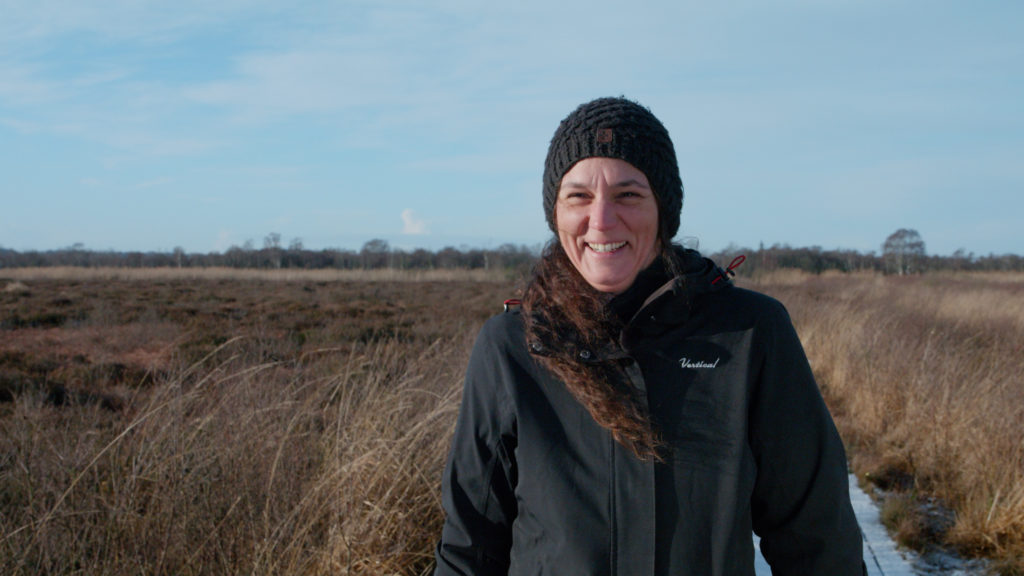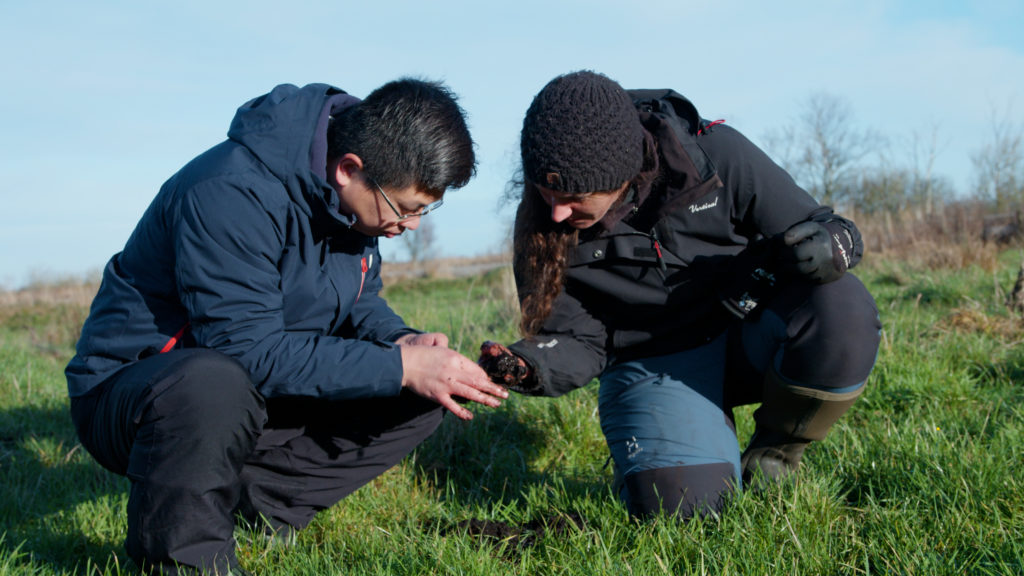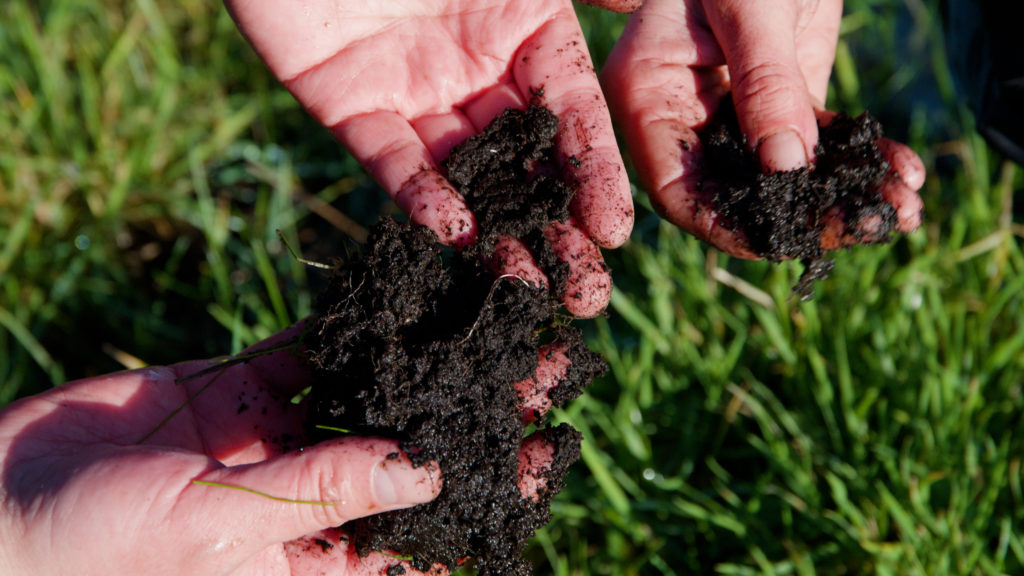No natural ecosystems – not even rainforests – store as much carbon as the world’s peat bogs. Once considered watery wastelands, and widely drained for agriculture, their restoration is now in the frontline of the fight against climate change and therefore the focus of important research.
Claudia Nielsen of the WET HORIZONS project and Aarhus University in Denmark studies how to achieve the best results. Here she talks to environmental science journalist Fred Pearce.

Dr. Claudia Nielsen from Aaarhus University department of Agroecology
FP (UWN): What is ecosystem restoration? Is it the same as rewilding?
CN: The concepts are different. Rewilding doesn’t have a specific goal other than restoring natural processes. It aims at minimal management. The result may be a novel ecosystem unlike any seen before, whereas ecological restoration works to re-establish a previous historical state – how nature used to be. To achieve that, it usually requires continuous management.
In the case of former wetlands, rewilders typically block the drains and step back. But restoration often goes much further. It might remove topsoil to get rid of agricultural chemicals, for instance. It may plant original vegetation, or even put in other ‘nurse crops’ to help create the conditions for the original vegetation to re-establish.
FP (UWN): Why does this matter? What is the importance of wetland restoration for the environmental issues of today?
CN: It is well known that intact wetlands – such as peat bogs and mangrove swamps – store more carbon per unit of land area than any other ecosystem. Likewise, we know that draining them releases this carbon as greenhouse gases such as carbon dioxide and methane, contributing to climate change, and that successful restoration can end these losses and turn them back into carbon sinks.
But wetlands have other critical benefits for both nature and human societies. They are among the most biodiverse ecosystems, and they are often critical for storing rainwater and regulating river flows – making them vital for both water supplies and flood prevention.
A tenth of all potable water globally comes from wetlands. Their massive storage in the upper reaches of rivers holds back flood waters after heavy rains. So, wetland restoration can be a great tool for maintaining water supplies and preventing flood disasters.


Dr. Claudia Nielsen with her colleague and WET HORIZONS project coordinator, Shubiao Wu. On location at Lille Vildmose
FP (UWN): What kind of research do you do yourself?
CN: My focus is on peatlands, mainly in northern Europe, but also in the Portuguese-run Azores islands in the mid-Atlantic, which I love. I am trying to understand the complex biogeochemical cycles of both natural peatlands and those that have been badly damaged by agriculture, to see how best they could be restored.
There are many questions that still need answers. A big issue for me is assessing the trade-offs between restoration for different aims – for climate, for biodiversity or for restoring natural river systems.
There are some important unknowns here. Right now, a lot of peatland restoration is restricted to blocking drains to keep the peat wet. The idea is to stop emissions of carbon dioxide from peat as it dries and decomposes. That approach can be great, but not always. Done in the wrong way in the wrong place, rewetted peatlands can become hotspots for emissions of another potent greenhouse gas, methane.
FP (UWN): So, beyond rewetting, what other techniques need exploring?
CN: I am particularly impressed with the moss layer transfer technique, which is proving very successful for restoring peatlands by re-establishing the growth of sphagnum mosses, which are their main vegetation. Interestingly, the technique uses another moss called polytrichum as a nurse-plant that encourages the reintroduction of sphagnum spores. I have seen bogs restored using this method growing strongly again.
For instance, earlier this year I visited Bois-des-Bel in southern Quebec, Canada, where most of the peat had previously been mined for horticultural peat. But after 23 years of restoration using this method, I found sphagnum cover more than 40 centimetres deep that was capturing carbon dioxide from the air, whereas a neighbouring area left to rewild on its own was mostly bare and still emitting the gas.
FP (UWN): Wetlands have long had very negative images – as bogs and mires, swamps and marshes. Is the world’s attitude to wetlands changing for the better?
CN: In some ways, yes. Commitments to halting climate change are making wetlands rewetting and restoration increasingly attractive for policymakers. Their protection and restoration are also featuring in global agreements on biodiversity and land degradation.
In Europe, we now have an EU Nature Restoration Law with a lot of emphasis on wetlands. Probably the largest actual project is the Lower Danube Green Corridor, in which Bulgaria, Romania, Moldova and Ukraine have agreed to restore the floodplain of the lower Danube for a thousand kilometres before it enters the Black Sea.
But I don’t know whether the political agenda has changed public attitudes much yet. Most landowners still see wetlands as unproductive and annoying. They want them drained, not protected. There is a lot of research now into paludiculture, which is a sustainable way of maintaining biomass production for harvest on wet peatland, but few farmers have adopted it yet. Most restoration still happens when governments step in and buy the land for nature conservation. We have a long way to go.
FP (UWN): How does wetland restoration fit into your own views about nature and conservation?
CN: Wetland restoration is for me part of a wider agenda for bringing back functioning ecosystems everywhere. But I believe this is not just about science. To do it successfully, we have to restore ourselves too – by learning to reconnect with nature and each other. Part of that is recognising and reconnecting with the often-superior knowledge that indigenous people have about ecosystems and how they function.
And we need to relax. That may sound an odd thing to say when the ecological crisis is urgent and all around us. But I have learned from First Nations people in North America that in many ways we move so fast that we often don’t make the right decisions. We do not have time to make any more mistakes. So, we have to slow down.
Author: Fred Pearce
This article was originally published on University World News on 26.08.2023.